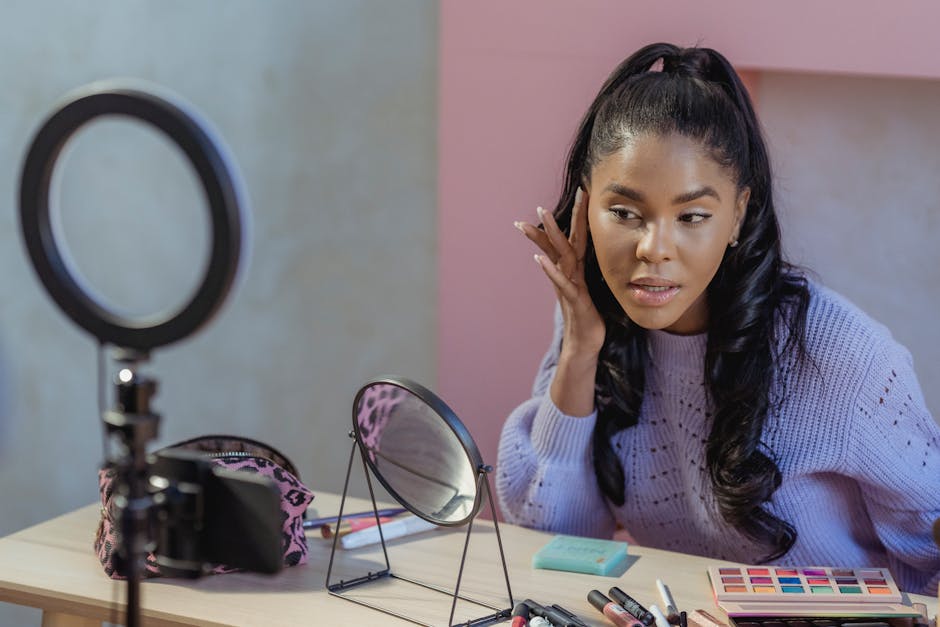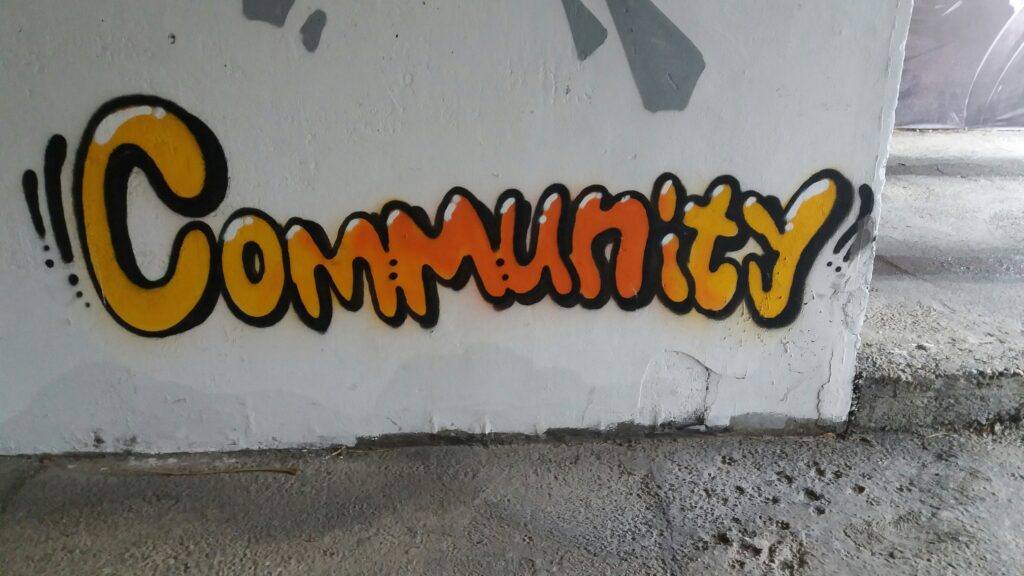Why Free Tools Matter When You’re Starting Out
Starting a vlog doesn’t mean emptying your bank account. In fact, the smartest creators in 2024 are proving you don’t need thousand-dollar gear or premium software to make something that sticks. What you need is resourcefulness. If you’ve got a halfway decent phone, an internet connection, and some grit—you’ve already got the foundation.
The real edge lies in your creativity, not your camera. Free tools today are more powerful than ever, and they let you experiment without the pressure of sunk costs. You can cut, color-correct, and polish a video to near-pro quality without spending a cent. And as you rack up hours editing, scripting, and shooting, you’re building the kind of skill set that gear alone can’t buy.
There’s time later to invest in upgrades. For now, keep things lean. Learn what works, fail a few times, get better. Every pro vlogger started somewhere—usually on a budget. Get scrappy. Make something that feels like you.
Video Editing Software (Free, But Powerful)
You don’t need a Hollywood budget to get clean, crisp edits. These three free editors cover the spectrum—from pro-grade color correction to punchy TikTok cuts.
DaVinci Resolve is a beast. It’s what actual film editors use, and yes, the free version gives you the essentials: multi-track editing, color grading, good transitions, and even basic motion graphics. The downside? It has a learning curve. But if you’re in this for the long haul, it’s worth the time investment.
HitFilm Express sits in the sweet spot between beginner-friendly and feature-rich. Designed with creators in mind, it offers solid VFX, green screen support, and templates for intros or lower-thirds. It runs lighter than Resolve, which means less stress on your machine. On the flip side, some higher-end features sit behind a paywall.
CapCut might look basic, but it punches above its weight, especially for mobile-first storytelling. It’s built for quick turnarounds: snappy cuts, overlays, trending sound syncs. It’s not meant for long-form or deep editing, but for those doing fast-paced content, it’s a killer tool.
Workflow Tips
- Batch your editing days; don’t try to write, shoot, and edit all at once.
- Build templates for intros, outros, and transitions so you’re not reinventing the wheel.
- Learn shortcuts—it trims hours. Most of these apps have easy-to-follow cheat sheets.
- Use proxy files if your computer is lagging. Speed matters when you’re churning out content regularly.
Fast, clean edits don’t require cash—just good tools and better habits.
Audio Tools That Don’t Cost a Cent
Clear, professional-sounding audio can make or break your vlog—especially when competing for attention in crowded feeds. Good news? You don’t need expensive gear to improve your sound. These free tools can instantly level up your audio quality, helping you engage your audience from the first word.
Essential Free Audio Tools
- Audacity
- A powerful open-source audio editor
- Great for cleaning up background noise, adjusting volume levels, and editing voiceovers
- Ideal for beginners and intermediate users alike
- Krisp.ai
- Real-time noise cancellation for calls and recordings
- Removes distractions like keyboard clicks, AC hums, or ambient chatter
- Perfect for creators vlogging from busy environments or home setups
- YouTube Audio Library
- An often-overlooked source for royalty-free music and sound effects
- Organized by mood, genre, and duration to save time
- Safe for monetized content—just check attribution requirements
Why Audio Quality Shouldn’t Be an Afterthought
Even if your visuals are top-notch, poor audio can tank your viewer retention. Clear sound helps convey tone, enhance storytelling, and build credibility. Here’s how strong audio supports your vlog:
- Builds viewer trust and keeps them watching longer
- Makes your content feel more polished and professional
- Reduces viewer fatigue from harsh or unclear sound
Pro tip: Always do a quick sound check before recording. Clean audio is easier to edit—and it may keep your content out of the dreaded “mute after 5 seconds” category.
Use these tools to start where you are—with what you have—while still delivering content that sounds clean, focused, and worth tuning into.
Graphic Design & Thumbnails
First impressions count. If someone scrolls past your video, chances are your thumbnail didn’t speak loud enough. Good news: you don’t need a design degree or a budget to fix that.
Start with Canva. It’s free, fast, and ridiculously easy to use. Drag, drop, tweak fonts—done. You can start with YouTube thumbnail templates or build your own layout from scratch. Add bold titles. Stick to three colors max. Keep faces large and expressions clear.
If you want Photoshop-level control without the subscription, Photopea is your best-kept secret. It runs in your browser, handles PSD files, and gives you layers, masks, filters—all the good stuff. Learning curve’s a bit steeper, but for creators who want more control over their branding, it’s well worth exploring.
For people and product promos, Remove.bg saves time. Upload a headshot or snapshot, and it pulls the background clean in seconds. Drop your cutout into any background in Canva or Photopea—and boom, a pro-level promo asset.
Smart branding isn’t about loud graphics—it’s about clarity. Use readable fonts. Use contrast to make subjects pop. Be consistent with your visual style—it builds recognition over time. Nail this, and even a casual browser will start to recognize your work before they click.
Free Screen Recording and Streaming Tools
If you’re not using OBS Studio yet, it’s time. OBS is the go-to for clean, stable screen recording and livestreaming—with zero cost. Whether you’re vlogging tutorials, reactions, or behind-the-scenes work, OBS lets you control quality without paying a dime. Plus, you can fine-tune resolution, capture multiple sources, and stream directly to YouTube or Twitch. It’s not flashy. It just works.
Streamlabs is like OBS with training wheels—and some extra toys. It’s built on the same backbone but adds overlays, chat tools, and performance tracking that new vloggers will appreciate. It’s especially solid if you’re focused on livestream-centric content but want a smoother setup experience.
For crisp recordings, stick with 1080p at 60fps if your gear can handle it. Use CBR (constant bitrate) for a consistent video stream; 4500–6000 kbps is the sweet spot. Record in MP4 or MKV to keep things editing-friendly. Your audio should be set to 44.1 kHz at 160 kbps minimum. It might sound dry, but these settings separate a polished vlog from a pixelated headache.
Stock Footage & B-Roll Libraries
If you’re not shooting cinematic drone shots on your own (yet), Pexels and Pixabay have you covered. These platforms offer a deep well of free HD and 4K footage you can use for transitions, intros, or to give your vlog a breather between segments. Think cityscapes, nature clips, time lapses, and abstract visuals. Clean, professional, and at zero cost.
But b-roll isn’t just filler—it’s a way to layer emotion, add context, or smooth out edits. Use it to visually underline what you’re saying without pulling attention completely. Good b-roll supports the narrative. Bad b-roll screams stock footage for the sake of it. Choose clips that actually fit your story, and keep them snappy. Don’t linger unless you’re making a point.
And yes, even when labeled “free,” there are rules. Always double-check each video’s license. Stick with content marked under the Creative Commons Zero (CC0) license, and avoid re-uploading these clips as standalone videos unless explicitly allowed. Attribution isn’t always required—but showing credit can still be good practice.
Bottom line: stock b-roll saves time, fills gaps, and boosts quality—but only if used with intention.
Organizational Tools for Vlog Planning
Starting a vlog means juggling content ideas, deadlines, file management, and creative energy. Having a streamlined system makes all the difference—especially when you don’t (yet) have a team behind you. Here are some free tools to keep you organized and ahead of your schedule.
Plan, Track, and Stay Consistent
Staying consistent with uploads depends heavily on how you plan. These tools help you map out your process from idea to upload:
- Notion: A powerhouse for creators who like flexibility. Use it to:
- Build a custom content calendar
- Track video status (idea, filming, editing, uploading)
- Store brainstorms, research, and scripts in one hub
- Trello: A visual task manager that’s easy to use and highly effective for vloggers.
- Create a board with lists like “Ideas,” “In Progress,” and “Published”
- Drag-and-drop cards to track progress
- Add due dates, checklists, and attachments to keep everything in one place
- Google Workspace: Ideal for collaboration and file organization:
- Use Docs for drafting scripts or outlines
- Store footage and thumbnails in Google Drive
- Share plans with collaborators or editors in real time
Why Structure Matters
When your creative process has structure, everything gets easier. Planning tools:
- Help you spot content gaps before they become missed uploads
- Keep track of evolving ideas and themes
- Make delegation and collaboration much smoother
Even the most creative vloggers stay consistent by working with systems—these free tools are a perfect place to start.
Learn While You Create
You don’t have to figure it all out on your own. The internet’s stacked with free or nearly-free resources that help you level up without wasting hours in the wrong direction.
Start with the YouTube Creator Academy. It’s run by YouTube, built for creators, and it doesn’t waste your time. Each module dives into real tactics: audience growth, analytics, monetization, and even getting past creative burnout. If you’re making content for the platform, this is the manual.
Next up: Skillshare. Their free trial gives you access to thousands of creator-led classes. From camera techniques to editing finesse, it’s solid ground for sharpening your skills before you invest serious money—or time—into bad habits.
Last, get friendly with free SEO tools like TubeBuddy (basic plan) or vidIQ’s Chrome extension. They don’t just throw keywords at you—they show what’s trending, what people are searching, and how your content stacks up. It’s intel that helps your videos get seen without paying for ads.
Collectively, these tools don’t cost a dime upfront, but carry real weight. Learn, apply, repeat.
Want a Step-by-Step Launch Plan?
Starting your vlog can feel overwhelming—but you don’t have to figure it all out on your own. Whether you’re unsure about your gear setup, struggling with content ideas, or just wondering how to start without burning out, having a roadmap makes all the difference.
What You’ll Learn in the Complete Guide
Need something more structured than scattered advice? Our Complete Guide to Starting a Vlog walks you through every major step:
- Choosing the right gear that fits your style and budget
- Building a sustainable mindset to avoid burnout early
- Planning your content pipeline to stay consistent
- Developing your niche so your vlog finds the right audience
- Launching with confidence—even if you’re a complete beginner
Who It’s For
This guide is ideal for:
- Aspiring vloggers with zero experience
- Creators coming from other content forms (bloggers, podcasters, etc.)
- Anyone who wants a more intentional and focused start
Instead of bouncing between tutorials, get everything in one simple resource.
Explore the Complete Vlogging Guide and start creating with clarity.
Final Word: You Don’t Need Expensive Gear—You Need Grit
Don’t let gear envy keep you from hitting record. A smartphone, free editing tools, and a steady mindset are enough to get going. The internet’s full of fancy production, but what sticks is honest, consistent storytelling. People follow people—not just polish.
Use what you’ve got. Show up often. Learn something new every week. That combo goes further than the latest camera rig ever will. Free tools can handle 80% of your workflow if you take time to master them. The rest? That’s built through showing up, putting in the reps, and staying curious.
Every successful creator started with zero. The difference is—they kept pressing upload.


 Eddiesons Sinhacha is dedicated to bridging technology and storytelling. At vlogedgevault he specializes in uncovering advanced techniques and digital trends that empower creators to elevate their content and reach wider audiences.
Eddiesons Sinhacha is dedicated to bridging technology and storytelling. At vlogedgevault he specializes in uncovering advanced techniques and digital trends that empower creators to elevate their content and reach wider audiences.

